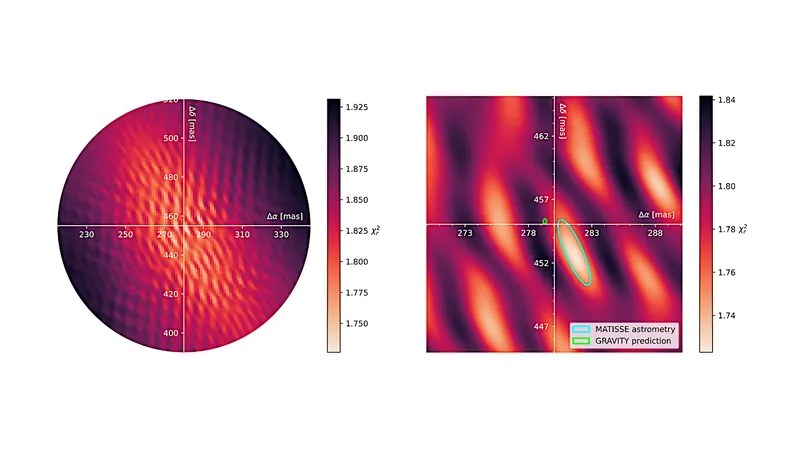
Breaking New Ground: First Ever Mid-Infrared Spectra of Exoplanet Beta Pictoris b!
2025-08-29
Author: Daniel
In a groundbreaking leap for exoplanet research, astronomers have successfully captured the first mid-infrared spectra of the giant planet Beta Pictoris b, unlocking secrets about its atmospheric composition and formation.
Unraveling the Mysteries of Mid-Infrared Spectroscopy
Directly imaging exoplanets has long been a challenge, particularly in the mid-infrared spectrum where valuable molecular signatures reside. These signatures can reveal vital information about atmospheric conditions and the dynamics of giant planet formation. Previously, most data gathered in this realm were limited, primarily focusing on near-infrared observations.
A Technological Leap with MATISSE
Thanks to the innovative MATISSE, the Very Large Telescope Interferometer's (VLTI) mid-infrared spectro-interferometer, researchers are pushing beyond previous limits. With cutting-edge upgrades like GRA4MAT, MATISSE enabled astronomers to observe Beta Pictoris b in L and M bands, yielding detailed spectra with a resolution of 500.
Decoding the Atmospheric Secrets of Beta Pictoris b
Utilizing advanced techniques to correct for spectral dispersion, the team achieved a high-signal-to-noise spectrum that finally highlighted the planet’s continuum in L and M bands. This unprecedented data reveals broad absorption features indicative of water vapor and carbon monoxide—key components for understanding the planet's atmosphere.
Establishing Atmospheric Composition
By combining the newly obtained spectrum with data from an earlier GRAVITY observation, researchers employed the ForMoSA modeling tool and the Exo-REM atmospheric models to deduce that Beta Pictoris b exhibits a solar carbon-to-oxygen ratio. This finding provides vital insight into the planet's atmospheric chemistry.
The Future of Exoplanet Observations
Looking ahead, this remarkable study not only paves the way for characterizing fainter and closer-in exoplanets using MATISSE, but also positions it as a complementary tool to the James Webb Space Telescope for studying planets too close to their stars. With the upcoming GRAVITY+ upgrade set to launch in 2025, the capabilities of MATISSE are expected to expand even further, promising exciting developments in exoplanet research.
This extraordinary achievement marks a significant milestone in the quest to uncover the complex mysteries of distant worlds!


 Brasil (PT)
Brasil (PT)
 Canada (EN)
Canada (EN)
 Chile (ES)
Chile (ES)
 Česko (CS)
Česko (CS)
 대한민국 (KO)
대한민국 (KO)
 España (ES)
España (ES)
 France (FR)
France (FR)
 Hong Kong (EN)
Hong Kong (EN)
 Italia (IT)
Italia (IT)
 日本 (JA)
日本 (JA)
 Magyarország (HU)
Magyarország (HU)
 Norge (NO)
Norge (NO)
 Polska (PL)
Polska (PL)
 Schweiz (DE)
Schweiz (DE)
 Singapore (EN)
Singapore (EN)
 Sverige (SV)
Sverige (SV)
 Suomi (FI)
Suomi (FI)
 Türkiye (TR)
Türkiye (TR)
 الإمارات العربية المتحدة (AR)
الإمارات العربية المتحدة (AR)